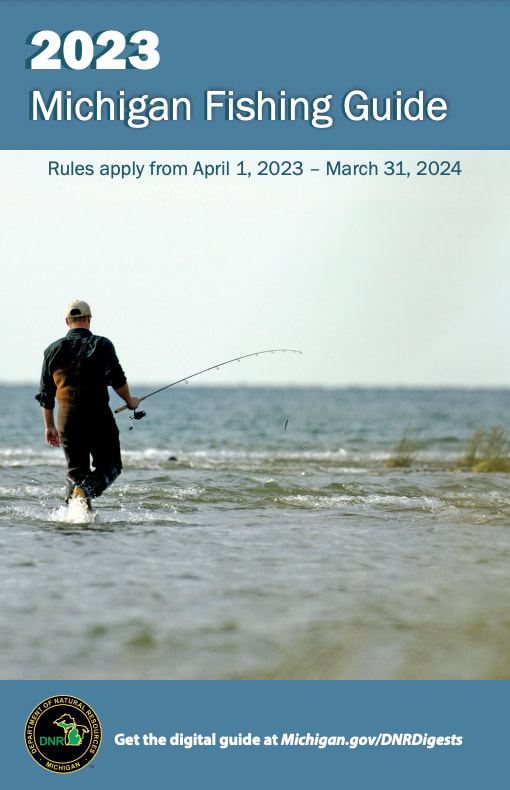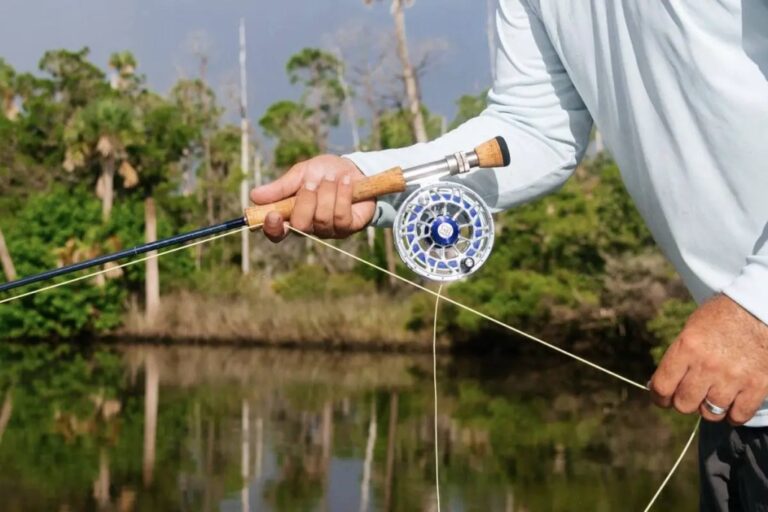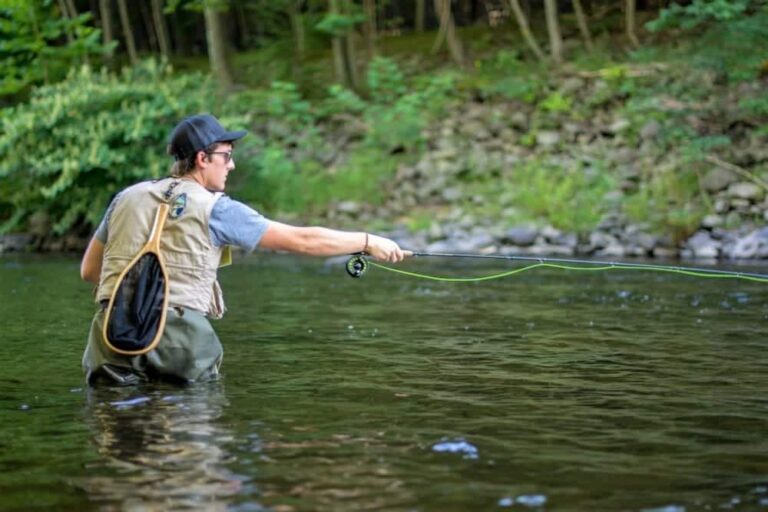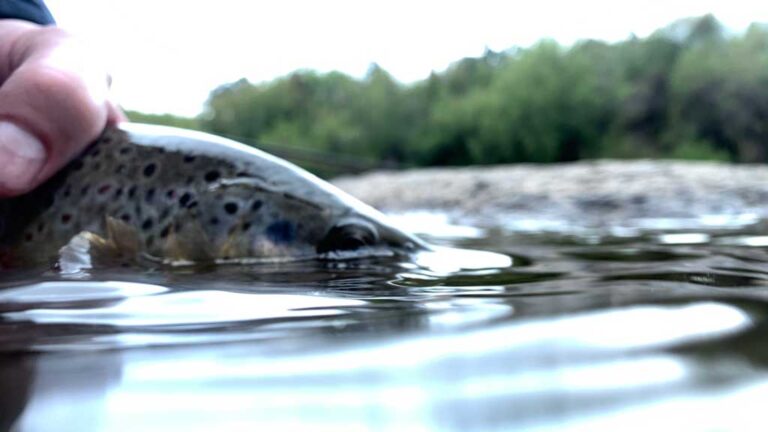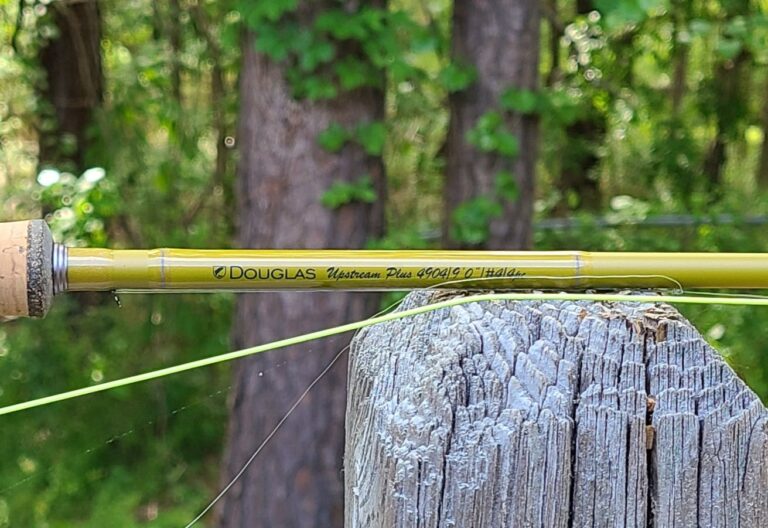Fly fishing rods are used for casting and controlling the line and fly during fly fishing. In this popular angling method, the angler uses a specialized rod to carefully cast an artificial fly, imitating insects or other natural prey, onto the water’s surface to attract fish.
The fly rod’s design allows for delicate presentations and precise control of the line and fly. This type of fishing is commonly practiced in rivers, streams, lakes, and other freshwater environments. Successful fly fishing requires skill in casting techniques and understanding fish behavior, making the choice of a suitable fly fishing rod crucial for the angler’s experience and success.

Credit: www.campsiteplanning.com
Understanding The Basics Of Fly Fishing Rods
Fly fishing rods are an essential tool for anglers to master the art of fly fishing. These specialized rods are designed to cast lightweight flies and deliver them with accuracy and precision. Understanding the basics of fly fishing rods is crucial for beginners and seasoned anglers alike.
In this section, we’ll delve into what fly fishing rods are commonly used for, the importance of choosing the right one, key components of these rods, and a brief overview of different types available.
What Are Fly Fishing Rods?
Fly fishing rods are long, flexible fishing rods specifically designed for fly fishing. They serve several key purposes in this unique fishing technique, including:
- Casting: Fly fishing rods allow anglers to cast a fly line, which carries the lightweight fly to the desired location. The casting action is different from traditional fishing rods, as it relies on the weight of the fly line rather than the lure or bait.
- Line control: Fly fishing rods enable anglers to manipulate the fly line during casting and presentation. This control is crucial for accurate casting, controlling the drift, and manipulating the fly to imitate natural movement.
- Sensitivity: Fly fishing rods need to be sensitive enough to detect subtle strikes from fish. Unlike other fishing methods, such as baitcasting or spinning, where the rod’s primary purpose is to fight and land the fish, in fly fishing, the rod also acts as a tool for detecting strikes and playing the fish.
The Importance Of Choosing The Right Fly Fishing Rods
Choosing the right fly fishing rod is vital for ensuring an enjoyable and successful fishing experience. Here’s why it matters:
- Casting efficiency: The right fly fishing rod will help you cast with ease and efficiency, allowing for longer, more accurate casts.
- Fly presentation: Different fly fishing rods have varying characteristics that affect how the fly behaves in the water. Choosing the right rod ensures proper presentation, which can make all the difference in enticing fish to strike.
- Playing and landing fish: An appropriate fly rod will provide the necessary strength and flexibility to play and land fish effectively. It needs to have enough backbone to handle the fish’s fight while still protecting the delicate tippet.
Key Components Of Fly Fishing Rods
To understand fly fishing rods better, it’s essential to be familiar with their key components, including:
- Rod blank: The rod blank refers to the main body or shaft of the fly fishing rod. It determines the rod’s weight, length, and flexibility. Materials commonly used for rod blanks include graphite, fiberglass, and bamboo.
- Grip: The grip is the handle of the rod that the angler holds while casting and fighting fish. It should provide a comfortable and ergonomic grip, allowing for precise control and reducing hand fatigue.
- Reel seat: The reel seat is where the fly reel attaches to the rod. It should securely hold the reel in place and provide stability during casting and retrieving.
- Guides: Guides are the circular rings along the rod that guide and control the fly line. They help prevent line tangles and ensure a smooth cast and retrieve. Guides can be made of various materials, such as stainless steel or ceramic.
- Action: The action of a fly fishing rod refers to its bending or flexing characteristics. It can range from slow to fast, indicating the rod’s responsiveness and flexibility. The action affects casting distance, accuracy, and the rod’s ability to handle different fishing scenarios.
Fly Fishing Rod Types: A Brief Overview
There are various types of fly fishing rods available, each designed for specific fishing conditions and target species. Here’s a brief overview of common fly rod types:
- Trout rods: Trout rods are versatile and suitable for targeting trout in freshwater streams, rivers, and lakes. They typically range from 7 to 9 feet in length and come in different weights to match various fishing scenarios.
- Saltwater rods: Saltwater rods are designed to handle the challenges of fishing in oceanic environments. They are generally longer and stronger than freshwater rods, ranging from 8 to 12 feet, and often feature corrosion-resistant components.
- Spey rods: Spey rods are specialized rods used for two-handed casting techniques. They are primarily used in salmon and steelhead fishing and are known for their long casting distance and line control.
- Switch rods: Switch rods are hybrid rods that can be used for both single-handed and two-handed casting techniques. They offer versatility in various fishing situations, making them a popular choice for anglers who enjoy different casting styles.
Understanding the basics of fly fishing rods, including their purpose, the significance of selecting the right one, the key components they consist of, and the different types available, empowers anglers to make informed choices and enhance their fly fishing experiences.
Mastering Different Techniques With Fly Fishing Rods
Fly fishing rods are versatile tools that enable anglers to engage in various fishing techniques. Whether you’re a seasoned angler or a beginner, mastering different techniques with fly fishing rods can enhance your fishing experience. In this section, we will delve into the casting techniques, nymphing techniques, and dry fly techniques that can be employed with fly fishing rods.
Casting Techniques For Fly Fishing Rods
Casting is a fundamental skill in fly fishing, and different casting techniques offer distinct advantages in various fishing scenarios. Here are a few casting techniques to consider when using a fly fishing rod:
- Overhead cast:
- This classic casting technique involves moving the rod backward and forward in a smooth motion, allowing the line to unfurl and carry the fly to its target.
- It offers precision and distance, making it suitable for larger bodies of water or when casting against the wind.
- Roll cast:
- The roll cast is perfect for tight spaces or areas with obstacles, as it doesn’t require much backcasting room.
- By using the tension of the water’s surface, anglers can roll the line out and place the fly accurately.
- Sidearm cast:
- When fishing under low-hanging branches or in windy conditions, a sidearm cast can be quite useful.
- By keeping the rod parallel to the water’s surface and executing a smooth cast, the fly can be delivered with precision.
Nymphing Techniques With Fly Fishing Rods
Nymphing is a popular technique used to imitate underwater insects, and it can be highly effective in catching trout and other species. Here are a few nymphing techniques to employ with a fly fishing rod:
- Dead drift nymphing:
- This technique involves casting the nymph upstream and allowing it to drift naturally with the current.
- By mimicking the behavior of real nymphs, anglers increase their chances of fooling fish into biting.
- Indicator nymphing:
- An indicator, usually a small float or visible object, is used to detect subtle strikes when nymphing.
- By adjusting the depth and following the indicator’s movements, anglers can detect bites and react accordingly.
- Czech nymphing:
- Originating from europe, this technique has gained popularity worldwide.
- Czech nymphing involves using heavily weighted flies and a short line to present the fly close to the riverbed.
Dry Fly Techniques With Fly Fishing Rods
Dry fly fishing is often referred to as the epitome of fly fishing, as it allows anglers to witness the excitement of fish rising to take a fly on the water’s surface. Here are a few dry fly techniques to explore:
- Traditional dry fly fishing:
- This technique involves casting a floating fly pattern onto the water’s surface and imitating insects that rest on top.
- Anglers must pay attention to the fish’s surface activity and choose the appropriate fly pattern.
- Terrestrial fly fishing:
- Terrestrial insects, such as grasshoppers or ants, can be imitated with fly patterns.
- By casting these patterns strategically near vegetated areas or overhanging branches, anglers can entice fish to strike.
- Emerger fly fishing:
- Emerger flies imitate insects transitioning from nymph to adult stage.
- By presenting the fly just below the water’s surface, anglers can entice fish that are targeting emerging insects.
Mastering different techniques with fly fishing rods opens up a world of possibilities for anglers. Whether you prefer casting, nymphing, or dry fly fishing, honing your skills with these techniques will undoubtedly enhance your fishing endeavors. So grab your fly fishing rod, hit the water, and explore the amazing techniques available to you.
Happy fishing!
Selecting The Right Fly Fishing Rods For Various Fishing Scenarios
Choosing Fly Fishing Rods For Different Fish Species
When it comes to fly fishing, selecting the right rod is crucial for a successful fishing adventure. Different fish species have different behaviors and habitats, which require specific types of rods. Let’s explore the key considerations when choosing fly fishing rods for various fish species:
Trout Fishing Rods
Trout are known for their agility and sensitivity to movement, making them a popular target for fly fishing enthusiasts. When selecting a trout fishing rod, consider the following:
- Rod weight: Opt for lighter weight rods (2-5 weight) for smaller trout species and smaller streams. Heavier weight rods (5-7 weight) are more suitable for larger trout and bigger rivers.
- Length: Choose a rod between 7 and 9 feet long, allowing for precise casts in tight spaces while maintaining enough power for longer casts.
- Flexibility: Look for a rod with medium or medium-fast action, as it provides the right balance between sensitivity and power.
Bass Fishing Rods
Bass fishing requires sturdy rods that can handle the fight of these ferocious fish. Consider the following when selecting a bass fishing rod:
- Rod power: Opt for medium-heavy to heavy rods (6-8 weight) to handle the larger size and strength of bass.
- Length: Choose a rod between 7 and 9 feet long, providing the necessary leverage to reel in those hard-fighting bass.
- Action: Look for a rod with fast action, allowing for quick hook sets and the ability to cast larger, heavier flies.
Salmon Fishing Rods
Salmon is a prized catch for many fly anglers, and choosing the right rod is essential for battling these powerful fish. Consider the following when selecting a salmon fishing rod:
- Rod weight: Opt for heavier weight rods (8-10 weight) to handle the size and strength of salmon.
- Length: Choose a rod between 9 and 11 feet long, providing the necessary reach for casting in larger rivers and handling powerful runs.
- Power and flexibility: Look for a rod with a strong backbone to handle the fight while still maintaining enough flexibility for delicate presentations.
Fly Fishing Rods For Different Water Environments
The water environment you’ll be fishing in also plays a significant role in selecting the right fly fishing rod. Consider the following for different water environments:
River Fishing Rods
River fishing often requires precision casting and maneuvering in tight spaces. When choosing a rod for river fishing:
- Length: Opt for shorter rods (7-9 feet) to navigate through narrow areas and brushy riverbanks.
- Action: Look for a rod with faster action to achieve accurate casts and control your line in varying river currents.
Stillwater Fishing Rods
Stillwater fishing, such as lakes and ponds, allows for longer casts and varying depths. When choosing a rod for stillwater fishing:
- Length: Choose a longer rod (9-11 feet) to achieve longer casts and effectively cover larger areas of stillwater.
- Flexibility: Look for a rod with medium to medium-fast action, providing sensitivity for detecting subtle strikes from fish in calm waters.
Saltwater Fishing Rods
Saltwater environments pose unique challenges, including strong winds and larger fish species. When choosing a rod for saltwater fishing:
- Rod weight: Opt for heavier weight rods (8-12 weight) to handle the larger saltwater fish species and windy conditions.
- Length: Choose a rod between 8 and 10 feet long, providing the necessary power for longer casts and better control in saltwater environments.
- Material and construction quality: Select rods made with corrosion-resistant materials and sturdy construction that can withstand the harsh saltwater conditions.
Factors To Consider When Buying Fly Fishing Rods
In addition to considering the fish species and water environment, there are several other important factors to consider when buying a fly fishing rod:
Rod Action And Flexibility
- Fast-action rods provide increased power and distance, ideal for casting distance and larger flies.
- Medium-action rods offer a balance between power and sensitivity, suitable for a wide range of fishing scenarios.
- Slow-action rods provide delicate presentations and are perfect for small streams and light freshwater fishing.
Weight And Length Considerations
- Rod weight affects casting accuracy, fighting strength, and the size of fish you can handle.
- Longer rods provide better reach, casting distance, and line control, but they may be challenging to handle in compact spaces.
Material And Construction Quality
- Graphite rods are lightweight, strong, and versatile, making them a popular choice for fly fishing.
- Fiberglass rods offer a slower action, suitable for beginners or anglers seeking a more relaxed casting experience.
- Bamboo rods provide a classic and nostalgic feel, but they require more care and are often pricier.
Choosing the right fly fishing rod for your specific fishing scenarios is essential for maximizing your chances of success and enjoying the sport to its fullest. Consider the fish species, water environment, and various factors mentioned above when making your decision.
Happy fishing!
Conclusion
As we come to the end of this blog post, it is evident that fly fishing rods serve a crucial role in the pursuit of this captivating sport. Designed with precision and crafted from high-quality materials, these rods enable anglers to cast their lines further and with greater accuracy.
Their flexible nature allows for delicate presentations, making them ideal for targeting various species of fish in different environments. Whether you are a beginner or an experienced angler, investing in a well-suited fly fishing rod can significantly enhance your fishing experience.
From the simplicity of a single-handed rod to the versatility of a switch rod, there are options available for all preferences and fishing conditions. So, as you embark on your next fly fishing adventure, equip yourself with the right rod and watch as your success on the water unfolds.


